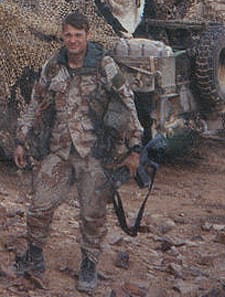Accuracy – Tactical Tips by Larry Vickers


Fayetteville, NC – -(AmmoLand.com)- As anyone who has taken one of my classes can attest I am very accuracy oriented. My classes always stress a high degree of accuracy. That is because in a gunfight accuracy will almost always suffer. There are many reasons for this not the least of which is you may very well be receiving fire from your assailant. In addition there is a high likelihood that you will be moving, your enemy may be moving, and it could be in an environment of limited visibility.
All of these factors and countless others will have a negative affect on accuracy. The hope is that if you strive for a high degree of accuracy in your training that when your accuracy suffers in a gunfight, it will still be enough to get the job done. This approach has been used with great effectiveness in Tier One special operations units for years. I am a product of that school of thought, and I have trained a great many of these soldiers with that approach uppermost in my mind.

Whenever I teach drills, I always tell my students to shoot as fast as they can, but not at the expense of a reasonable accuracy standard. One of the techniques I use frequently is to place a 25 yd pistol bullseye center target on the chest area of an IPSC or IDPA target. I then tell the students to shoot as fast as they can on each and every drill but always strive to keep the shots in the black of the bullseye. On drills such as shooting on the move this is opened up to keep your shots on the replacement center paper. This is commonly known as the ‘aim small, miss small’ approach. Part way through the first day I will peel off the bullseye and show the students the large ragged hole that inevitable results from this drill. This reinforces the teaching point that speed is fine, but accuracy is final – words that I live by.
Another question I get frequently asked is what is the acceptable mechanical or intrinsic accuracy for a service pistol or carbine. Meaning what should the weapon/ammo combination be capable of producing from a shooting device or rest that eliminates shooter error. Keep in mind I come from a surgical accuracy oriented special operations background with little margin for error. Based on this and years of experience I have concluded that a service pistol should be capable of head shots at 25 yds and a service carbine should be capable of the same at 100 yds – basically 5 inch groups. However there is a catch; I have found that under conditions of stress a shooter will only be able to shoot to within roughly 50 % of the accuracy potential of a given weapon. And that is only for the best shooters; the majority will not even be close to that. That means in order to achieve my standard of head shots (5 inch groups) at a given distance the weapon/ammo combination needs to be capable of at least 2.5 inch groups. I personally measure that accuracy standard with 10 shot groups. Many quality service pistols and carbines with good ammo will achieve this but there are many other factors involved such as sights and trigger pull characteristics. By these criteria it is not hard to see why a tuned 1911 pistol is so popular in selected spec ops units. Keep in mind that any effort to make a weapon more accurate almost always means tightening tolerances which can lead to a less than acceptable reliability standard for a combat weapon. A balance between accuracy and reliability has to be achieved. Surprisingly there are many pistols and carbines that do a good job offering an acceptable blend of both. In addition weapons of this type will require a higher degree of end user maintenance to keep them running. Don’t expect a pistol to shoot like a custom 1911 but be as forgiving about maintenance as a Glock 17; it just doesn’t happen that way.
In closing always strive to maintain a high degree of accuracy in your training sessions. It will serve you well in case you ever have to use your weapon for real. Remember the motto on the home page of this website: Speed is fine- Accuracy is final.
About:
Larry Vickers is a retired career special operations soldier with 20-plus years of service to our country. A longtime 1st SFOD- Delta operational member, he was a key player in the small arms marksmanship expertise and weapons selection of that Unit. He brings a very unique set of skills to the market, and has a wide and varied background in the firearms industry.
Visit www.vickerstactical.com
